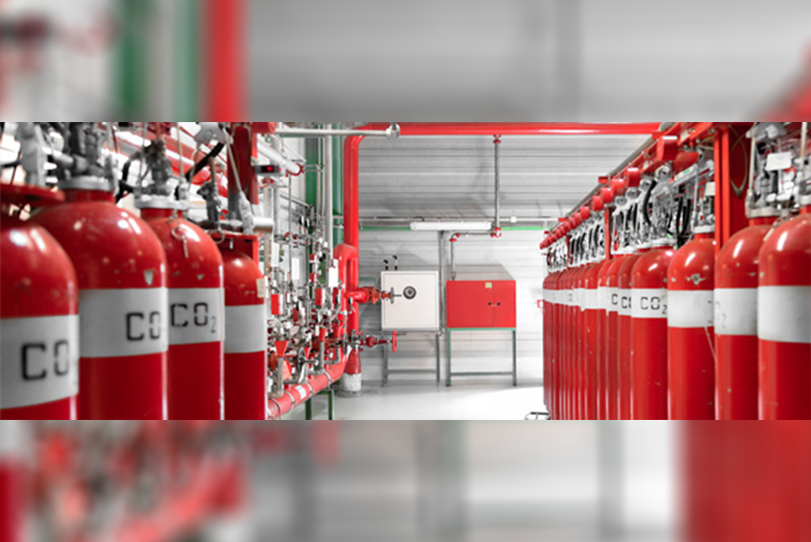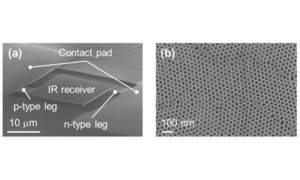The use of natural refrigerants started mainly in the retail (supermarket) business areas more than 10 years ago, especially in the Nordic countries.
There was a lot of different setup at the beginning, with cascade systems and different refrigerants used. As we know, the main solution today in the retail business is a transcritical CO2 booster system providing cooling for shops. CO2 units are now getting smaller and smaller, so the use of CO2 is becoming more widespread. Air handling units with integrated heat pump for heating or cooling is one of the HVAC applications that is now moving towards the use of natural refrigerants. One of the main drivers is certainly the limitation in the use of HFC refrigerants. Yet for an air handling unit, the choice of refrigerant is much more difficult, and this is mainly due to the temperatures that the units run at. The site of installation is also an issue in the choice of refrigerant, due to the noise level of the compressor, normally installed inside the unit.
So, to select the right refrigerant, there are many aspects to take into account.
- Can we use a flammable refrigerant?
- Can we use CO2 due to the high pressures?
- What kind of compressor can we use and buy?
- Can we get the components that we need?
- How can we stand up-to-date on components and rules / laws?
The easy answer to all these questions is yes, we can in fact solve all of these “small” details when using a natural refrigerant.
Let’s have a look first at the issue of flammability and the use of flammable refrigerants.
We can state that under all normal conditions and in normal operation, there are no issues regarding flammability, as the refrigerant is inside the pipes. It is not in the air that is supplied through the ventilation system. In all types of air handling units with flammable refrigerants, the use of a gas leakage detector is essential; this is the main safety device to ensure that in the event of a leak, the system stops and an alarm is activated so that action can be taken to solve the problem. One of the big benefits of using flammable refrigerants is that the temperature and pressure levels are very much like the levels of HFC refrigerants.
The components that can be used are also already available on the market, we can even find DC technology/ compressors for natural refrigerants for use in these HVAC applications, making it possible to build high efficiency units with optimal management of compressor capacity according to the load, especially in the part of the year with only low cooling or heating demand. One issue still remains on the use of flammable refrigerants, EU rules – laws – regulations – local laws and rules. This is perhaps the biggest barrier today to the use of flammable refrigerants. There is a good reason to believe that EU-wide rules and will come in place by the end of 2021.
When looking at local rules, these may be very different from country to country, and even inside the same country there may be different regulations according to the local fire department or community rules. This is really one of the main problems for the manufacturers and installers of these units: is there a special local rule where the AHU is going to be installed, or it is simply a case of installing it and getting it up and running. Then we need to know who to ask about local rules, so there is a lot of work to do when installing an air handling unit with flammable refrigerants when it comes to local rules and laws.
CO2 could be a solution for the future of air handling units.
The number of components on the market today for CO2 applications is growing every day, and therefore the option to use CO2 as the refrigerant is also growing in areas other than the retail market. The HVAC air handling unit sector is a good example of this. Small air handling units with integrated heating and cooling and built with a transcritical CO2 system. The big benefit of using CO2 is that it is not flammable, yet on the other hand there are high pressures.
The main barriers have been the components required for the high pressures that these applications operate at, the lack of compressors for high pressures and the need for low capacities at the same time. These things have now been solved, there are more and more suppliers of small CO2 compressor even with DC technology for use in these applications. This means that the issue about controlling capacity at low demand has been solved thanks to DC technology compressors and the flexibility of compressor operating ranges.
Another issue that relates to the compressor involves whether a parallel compressor setup is possible, giving the flexibility of the system we see today with similar systems using HFC refrigerants, plus the management of high loads and low loads at the same time. Here the experience from retail applications, for example with DC technology compressors in parallel, will be very useful; the main issue in this case is oil management between the compressors. With all the testing and different setup of oil management around the world, many of these issues will not affect the air handling unit market as they have already been tested and solved. Also for the valves and other components, many more options are available now than just a few years ago.
Now there are plate heat exchanges for high pressures as standard, unlike in the past when special versions had to be ordered, with very long delivery times. If we look at the rules and laws when using CO2 refrigerant, these are much easier to comply with than those relating to flammable refrigerants. Here we “only” have to manage any possible leakages in the refrigerant circuit, and this is easily done with a gas leakage detector. None of the other issues about refrigerant charge and flammability affect CO2, so it should be easier to manage regarding rules and laws. The success of these new solutions with natural refrigerants also depends on the level of knowledge of installers. Here manufacturers have a big responsibility in training installers on new solutions.
Schools and the like will have also a big impact on the success of these new solutions, if they are able to provide training and knowledge on rules, standards and basic training on natural refrigerants, this will be a major help for installers. We have already seen this in the retail refrigeration business area, where many manufacturers have established training academies, and for sure HVAC manufacturers will also have to do something similar to ensure the level of knowledge and training for installers is as high as possible regarding the natural refrigerant solutions they are about to install. This knowledge is a major factor: the better prepared the installers, the more success natural refrigerant solutions will have on the HVAC market, and it will also be easier to sell and support the solutions if the knowledge level is high.
So it is hard to say what the future refrigerant will be in air handling units, but for sure one of them will be a natural refrigerant, with solutions available both as regards to safety and energy consumption. Clearly the cost of some of these components is higher than the standard for HFC, yet the price of component for natural refrigerants will start to fall as demand grows.
How can we stay up-to-date on components and rules / laws?
The web is always a good place to source components, and all companies these days send out newsletters with product news. It is also possible to check out some of the organisations that gather information about products and rules and make databases with the information, so as to have a good starting point for finding components and the latest rules for the use of natural refrigerants. One example of a place to find components for CO2 applications is the R744 website.
Cookie Consent
We use cookies to personalize your experience. By continuing to visit this website you agree to our Terms & Conditions, Privacy Policy and Cookie Policy.















